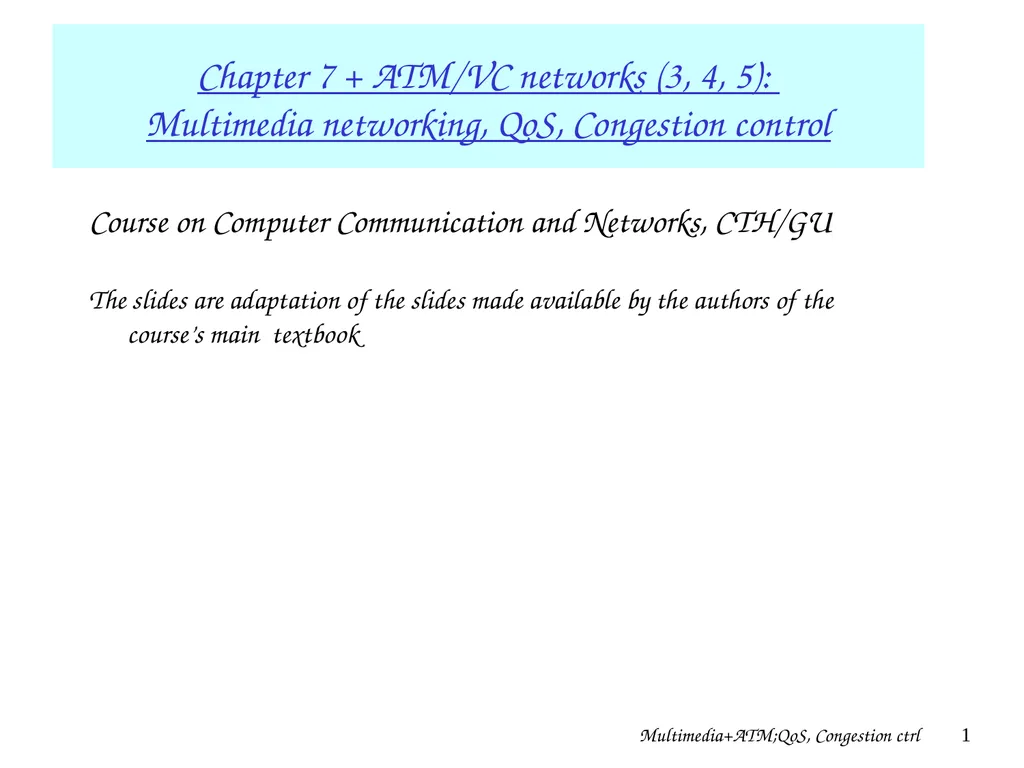
Multimedia+ATM;QoS, Congestion ctrl 1 Chapter 7 +
Author: stefany-barnette | Published: 2025-05-28
Description: MultimediaATM;QoS, Congestion ctrl 1 Chapter 7 ATMVC networks (3, 4, 5): Multimedia networking, QoS, Congestion control Course on Computer Communication and Networks, CTHGU The slides are adaptation of the slides made available by the
Download Presentation
Download the PPT/PDF: Download
Transcript:
Loading transcript…